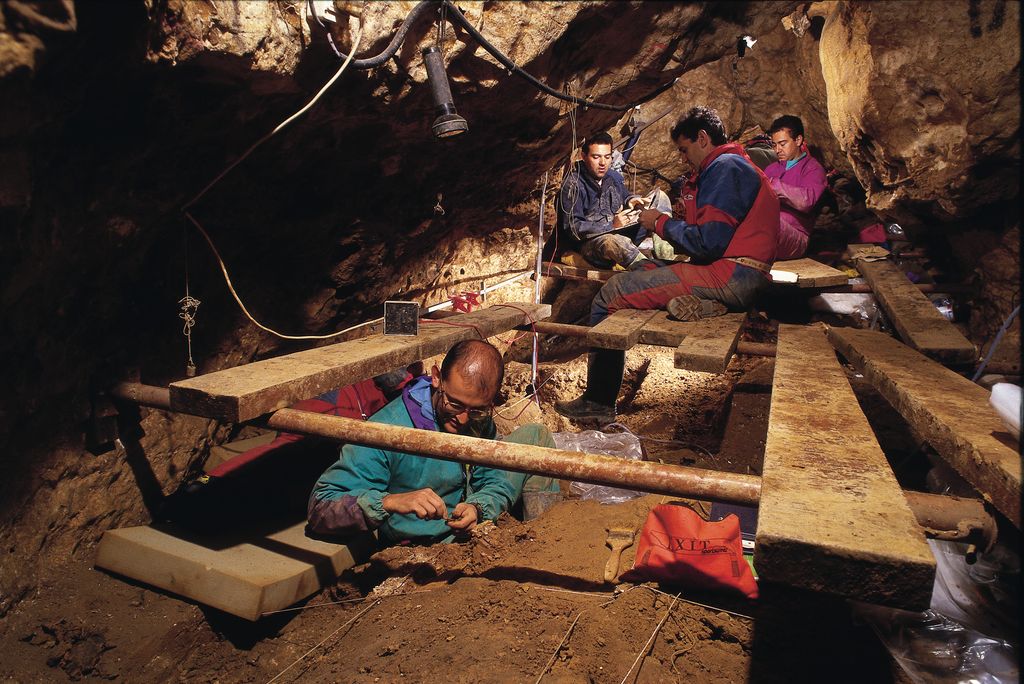Recently, DNA has been extracted from a 400,000 year old femur discovered at an archaeological site in Spain. The DNA is the oldest yet published and its findings have surprised researchers because it was found to be more closely linked to the Denisovans, rather than Neanderthals as would be expected.
The fossil was excavated in the 1990s from a deep cave in a well-studied site in northern Spain called Sima de los Huesos (‘pit of bones’). This femur and the remains of more than two dozen other hominins found at the site have previously been attributed either to early forms of Neanderthals, who lived in Europe until about 30,000 years ago, or to Homo heidelbergensis, a loosely defined hominin population that gave rise to Neanderthals in Europe and possibly humans in Africa.
But a closer link to Neanderthals than to Denisovans was not what was discovered by the team led by Svante Pääbo, a molecular geneticist at the Max Planck Institute for Evolutionary Anthropology in Leipzig, Germany.
The team sequenced most of the femur’s mitochondrial genome, which is made up of DNA from the cell’s energy-producing structures and passed down the maternal line. The resulting phylogenetic analysis — which shows branches in evolutionary history — placed the DNA closer to that of Denisovans than to Neanderthals or modern humans. “This really raises more questions than it answers,” Pääbo says.
However, it is important to remember that, unlike nuclear DNA which is contains material from both parents, mitochondrial DNA is only passed down maternally so these findings do not necessarily mean that these homonins were more closely related to the Denisovans, who are believed to have lived in southwestern Siberia thousands of years later. With this in mind, the unexpected link is still surprising and creates new questions. Pääbo speculates:
previously published full nuclear genomes of Neanderthals and Denisovans suggest that the two had a common ancestor that lived up to 700,000 years ago. He suggests that the Sima de los Huesos hominins could represent a founder population that once lived all over Eurasia and gave rise to the two groups. Both may have then carried the mitochondrial sequence seen in the caves. But these mitochondrial lineages go extinct whenever a female does not give birth to a daughter, so the Neanderthals could have simply lost that sequence while it lived on in Denisovan women.
A research uninvolved with this particular study, Chris Stringer, a palaeontologist at London’s Natural History Museum, has a different, but equally intriguing, interpretation:
He thinks that the newly decoded mitochondrial genome may have come from another distinct group of hominins. Not far from the caves, researchers have discovered hominin bones from about 800,000 years ago that have been attributed to an archaic hominin called Homo antecessor, thought to be a European descendant of Homo erectus. Stringer proposes that this species interbred with a population that was ancestral to both Denisovans and Sima de los Huesos hominins, introducing the newly decoded mitochondrial lineage to both populations.
This scenario, Stringer says, explains another oddity thrown up by the sequencing of ancient hominin DNA. As part of a widely discussed and soon-to-be-released analysis of high-quality Denisovan and Neanderthal nuclear genomes, Pääbo’s team suggests that Denisovans seem to have interbred with a mysterious hominin group.
If Pääb’s team can uncover nuclear DNA from the bone (a daunting task) then we may have answers to these new mysteries. Read the full article at Scientific American.


